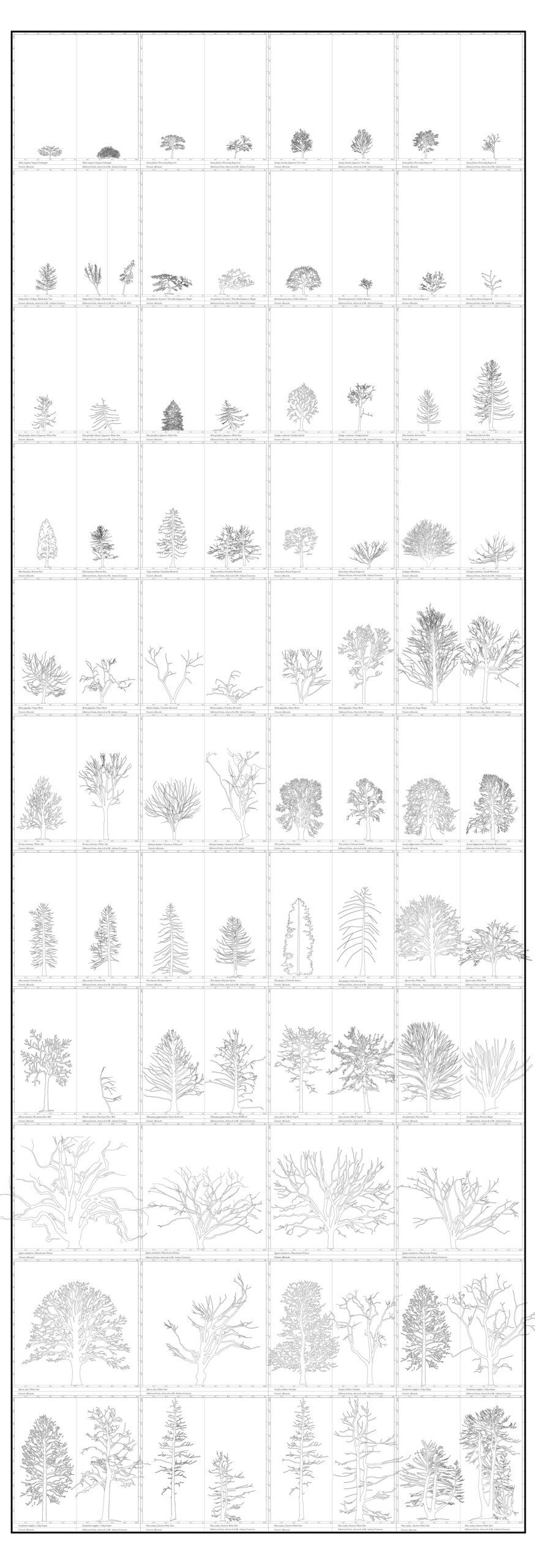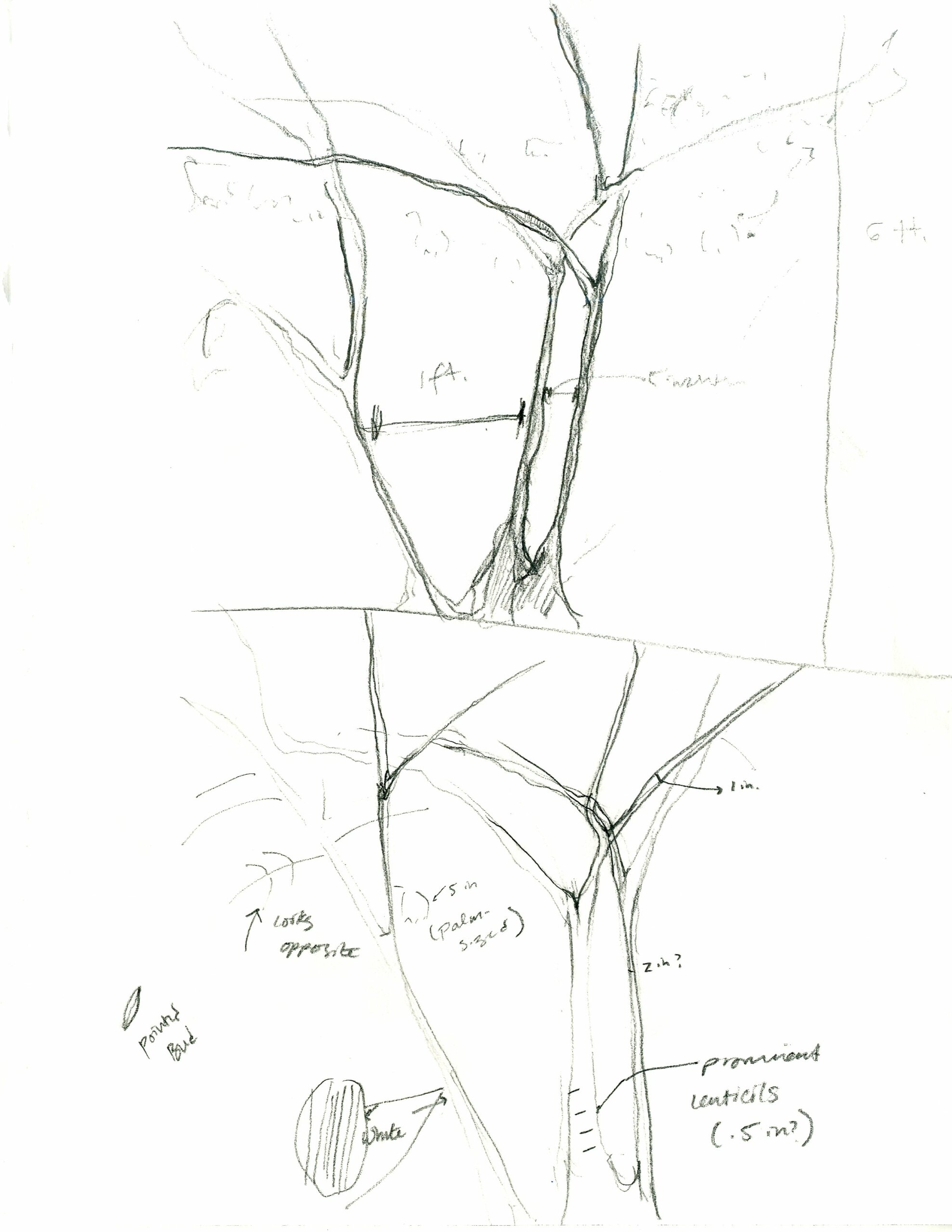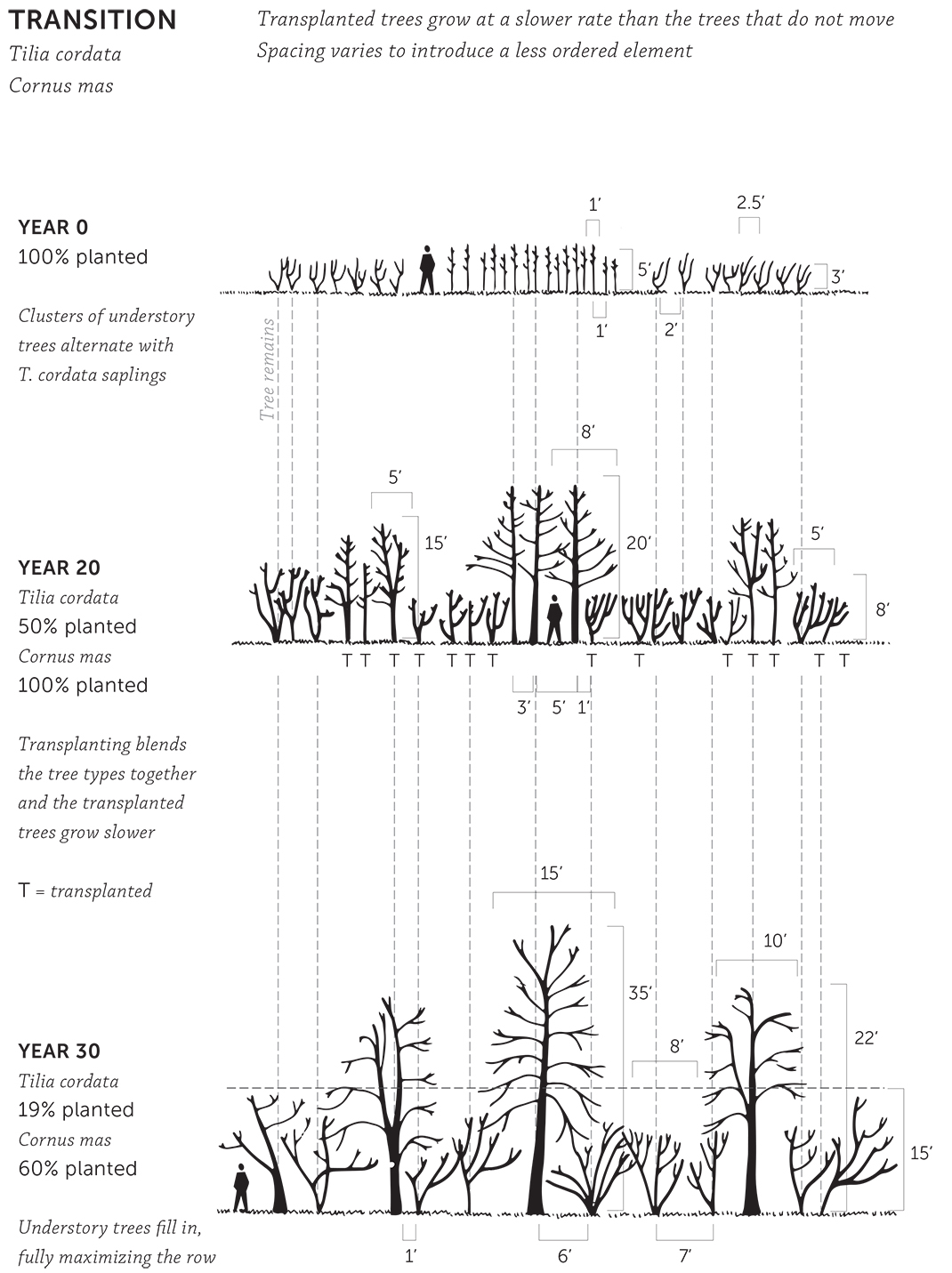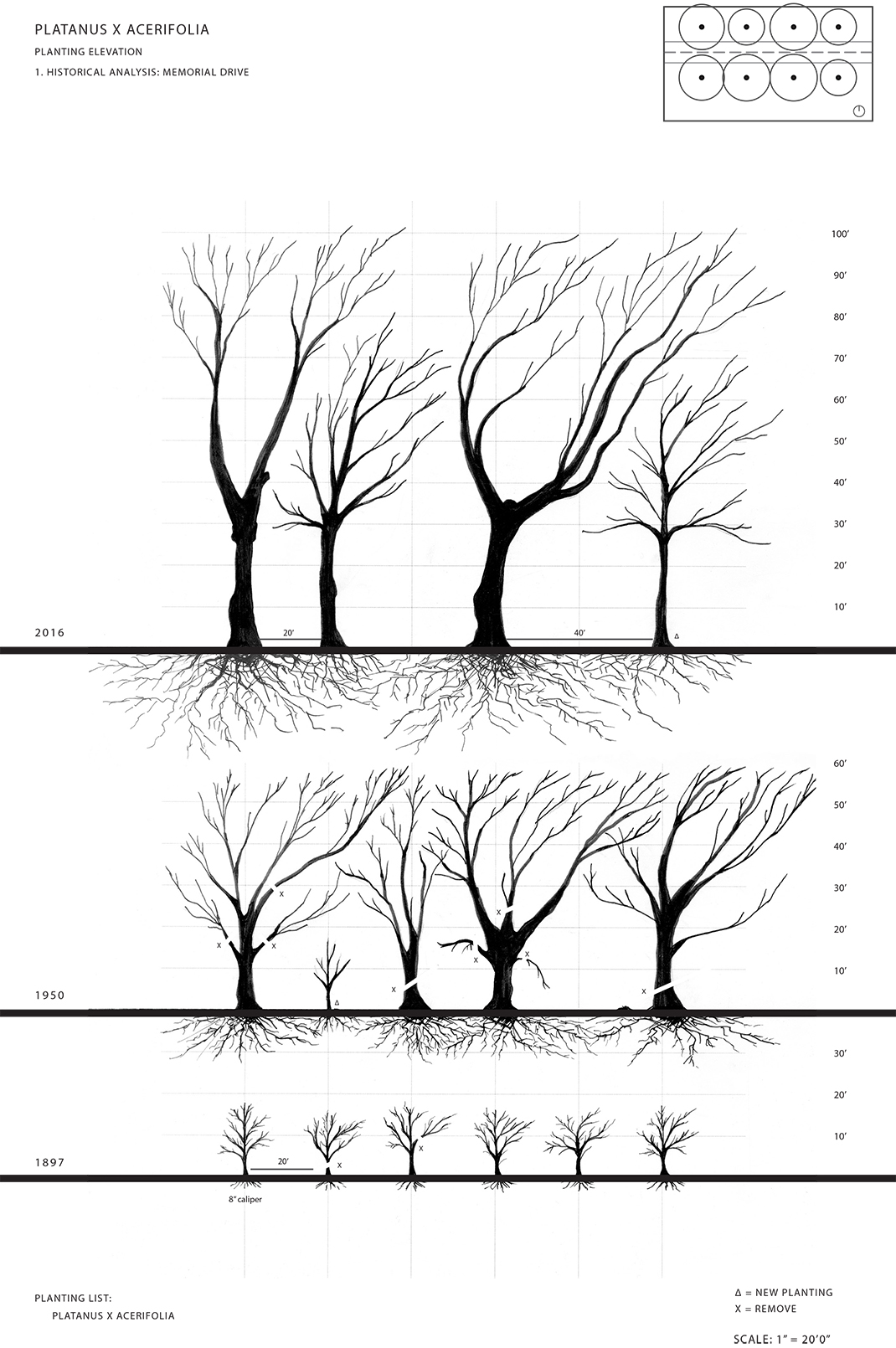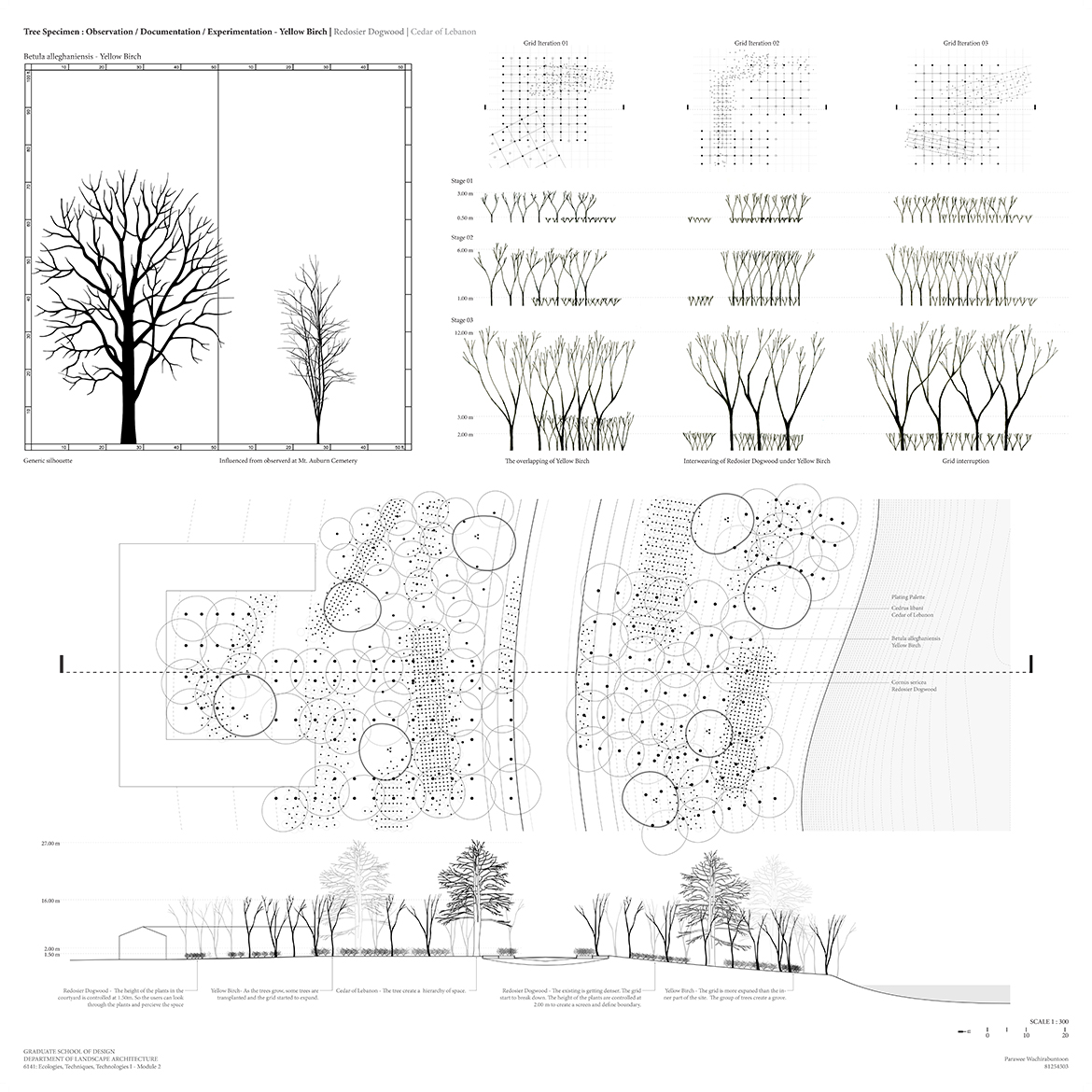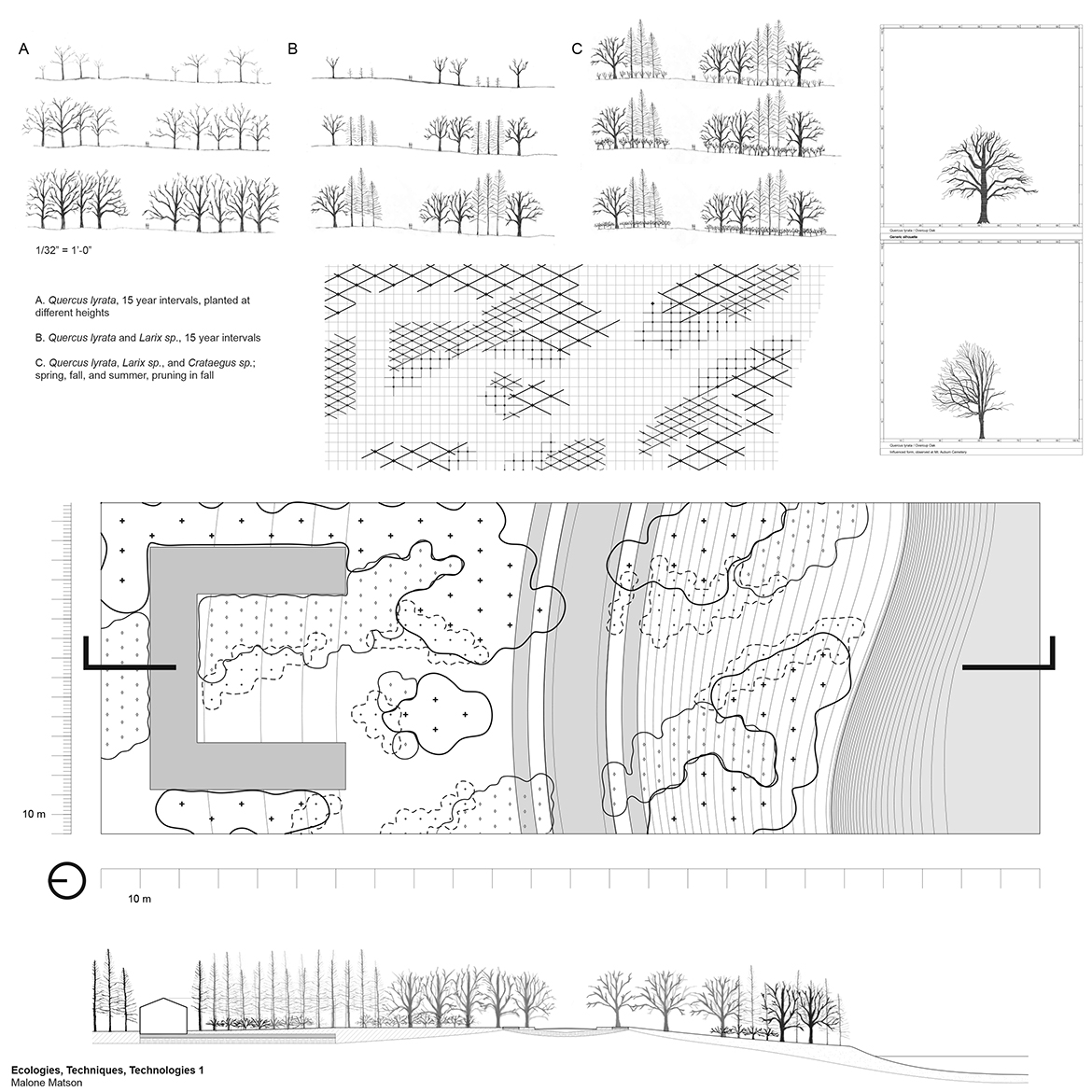Index of Formation
Mount Auburn Cemetery, Cambridge MA
Collaboration with Harvard Graduate School of Design
Rather than memorizing binomials or outlining generic form, this course emphasizes how plants grow, underscoring formation and transformation as a means to expanding design practices. Plants are a fundamental expression in landscape architecture. As our most explicit vertical parameter, plants combine the essential geometries of ecological, horticultural, and social traditions. They are nature and culture combined; a notion that resonates with particular clarity in the context of Mount Auburn Cemetery. This lecture and workshop class takes Mt. Auburn Cemetery as a laboratory for the direct observation of woody plants and engages with critical analysis through an acknowledgment of the unique environmental conditions surrounding each individual organism. By placing emphasis on how plants grow, move, and act under a profusion of natural forces and human manipulations, and with an insistence on processes of formation over occurrences of form, students have the opportunity to develop their knowledge of trees and shrubs outside the dictatorial rubrics of generic models. Through observational and topological drawing, students develop a shared catalogue of images that highlight differences between standard representations of plant form and specific circumstances of observed growth. This knowledge is then used to develop an urban street planting plan that strategically employs plants for their anticipated response to site-specific conditions including physical adjacencies, tropisms, and soil conditions.
Harvard Graduate School of Design; Ecologies, Techniques, Technologies Planting Design. Below is a sample of student work include: Ann Lynch, Emily Hicks, Danica Liongson, Parawee Wachirabuntoon.
Mount Auburn Tree Catalogue, over 100 freely available blocks of non-generic tree form
